|
Books Should Be Free Loyal Books Free Public Domain Audiobooks & eBook Downloads |
|
|
Books Should Be Free Loyal Books Free Public Domain Audiobooks & eBook Downloads |
|
Humorous Books |
|---|
|
Book type:
Sort by:
View by:
|
By: Barry Pain (1864-1928) | |
|---|---|
 Eliza
Eliza
A gentle, yet deliciously humourous series of anecdotes following the life of the main character and his wife, Eliza. | |
 If Winter Don't
If Winter Don't
Barry Pain's parody takes a sharp knife to ASM Hutchinson's best selling novel 'If Winter Comes'.We follow the professional and marital decline of long suffering (and loving it), Luke Sharper, as his marriage to Mabel flounders while his love for Jona flourishes. It could only end in tears.....Or could it? ( | |
 Problem Club
Problem Club
The Problem Club is an infamous London Club which meets once a month to discuss a given problem. The problems have nothing to do with mathematics, but are social problems, in the broadest possible sense of the word. For instance, how does one manage to kiss ten young ladies on the cheek within the space of one hour without offending any of them? Would you be able to solve this problem? Watch the members of the Problem Club compete and find out how it is done. - Summary by Carolin | |
By: Barton Wood Currie | |
|---|---|
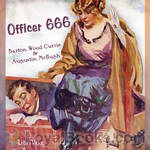 Officer 666
Officer 666
Bored with his life as a wealthy businessman's only son, Travers Gladwin learns of a plot by a renowned art burglar to rob his house, so rather than thwart the planned burglary, he borrows a police uniform from a friend and decides to confront the robber by posing as an officer. When the burglar arrives at the house, he tries to pass himself off as Travers Gladwin. From there, things only get more complicated, including the arrival of the burglar's girlfriend who believes that her beau is the wealthy man's son. Comical and timely, the book was made into a movie multiple times, each hugely successful. | |
By: Bill Nye | |
|---|---|
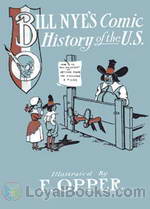 Comic History of the United States
Comic History of the United States
For American journalist and humorist Edgar Wilson Nye who wrote under the pen name Bill Nye in the late 19th century, facts are not to be presented in their newborn, bare state. They should be properly draped and embellished before they can be presented before the public. Hence, in the Comic History of the United States published in 1894, he gives his readers the facts. But in a bid to make the historical figures more human he describes them as “people who ate and possibly drank, people who were born, flourished and died, not grave tragedians posing perpetually for their photographs... | |
 Comic History of England
Comic History of England
If you thought history was dull, dry and boring, you haven't read Bill Nye's books! He brings wit, humor, satire, irony and sheer nonsensical fun into the subject, making it both entertaining and memorable. The Comic History of England was published posthumously in 1896 after the writer's tragic and untimely death half-way through the project. Hence it remains incomplete and covers the history of the island nation only up to the Tudor period. However, beginning with Julius Caesar, the Roman invasion of Britain, the Druids and Stonehenge, this book is still a rib-tickling ride through the centuries... | |
 Bill Nye's Funniest Thoughts
Bill Nye's Funniest Thoughts
Bill Nye was a famous American humor columnist in the middle 1800's. He said "We can never be a nation of snobs so long as we are willing to poke fun at ourselves." And he did exactly that in hundreds of newspaper columns that were later collected into books. This is a selection of just 35 of the most humorous, wry and downright funny cogitations of his, written of course in the somewhat convoluted style common in the 19th century which just adds to their flavor in my opinion. The selection process was rigorous: only those that made me laugh, giggle or snort are included. | |
 Baled Hay: A Drier Book than Walt Whitman's ''Leaves o' Grass''
Baled Hay: A Drier Book than Walt Whitman's ''Leaves o' Grass''
There can really be no excuse for this last book of trite and beautiful sayings. I do not attempt, in any way, to palliate this great wrong. I would not do so even if I had an idea what palliate meant. . . . I have taken great care to thoroughly eradicate anything that would have the appearance of poetry in this work, and there is not a thought or suggestion contained in it that would soil the most delicate fabric. Do not read it all at once, however, in order to see whether he married the girl or not. Take a little at a time, and it will cure gloom on the "similia simili-bus curanter" principle. - Summary by Bill Nye | |
 Guest at the Ludlow and Other Stories
Guest at the Ludlow and Other Stories
Bill Nye was a respected journalist who also became known as a humorist. His short pieces range from a description of a visit to a friend residing in Ludlow prison, to “advice” to a son, to a wry commentary on his visits to Oakland, California. From real estate “investments” to accounts of less than ideal train passengers, Mr. Nye had his eye trained on the ironies of life, addressing them in the only sure way to preserve sanity, with humor. | |
By: Booth Tarkington | |
|---|---|
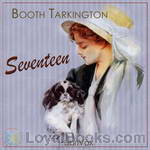 Seventeen
Seventeen
A Tale of Youth and Summer Time and the Baxter Family Especially William | |
 Gentle Julia
Gentle Julia
Penrod for girls in the form of Florence, the bratty younger cousin of luminous Julia Atwater, enlivens this romantic comedy set in Tarkington's Indiana of the early 20th Century. | |
 Penrod
Penrod
Join Penrod Schofield and his wistful dog Duke, in a hilarious romp through turn of the century Indianapolis, chronicling his life, loves, and mostly the trouble he gets into. | |
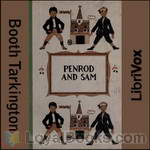 Penrod and Sam
Penrod and Sam
Follow more of the hilarious life of the boy Penrod Schofield, his friends Sam Williams, Herman, Verman, Georgie, Maurice, and the love of his life, Marjorie Jones. | |
By: Brandon Thomas (1848-1914) | |
|---|---|
 Charley's Aunt
Charley's Aunt
The girlfriends are coming to visit the chaps at college, but of course they can't stay unless there is a proper chaperone. So what could be more reasonable that getting a friend from the Drama Club to dress up and pretend to be Charley's Aunt? Simple and sure to work! What could go wrong? Howsabout the real aunt arriving? This play has been revived and adapted numerous times including as films, a Broadway musical, and even an opera. - Summary by ToddHW Cast list: STEPHEN SPETTIGUE, Solicitor, Oxford: Foon COLONEL SIR FRANCIS CHESNEY, BART... | |
By: Bruce Bairnsfather (1887-1959) | |
|---|---|
 From Mud to Mufti: With Old Bill on all Fronts
From Mud to Mufti: With Old Bill on all Fronts
This second volume of memories from the Great War by the celebrated war cartoonist and social observer, begins with Bairnsfather's recuperation from injuries suffered in the Second Battle of Ypres and ends with the Armistice. In this phase of his war activity, Bairnsfather is repeatedly hampered by his inability to fully recovery from his war wounds, and is eventually removed from combat service. This perceived disaster for his war career actually was a lucky break, because he was then attached to British Intelligence as an authorized war cartoonist--perhaps the only one of the war... | |
By: C. J. Dennis (1876-1938) | |
|---|---|
 Jim of the Hills - A Story in Rhyme
Jim of the Hills - A Story in Rhyme
Jim, an axe-man for a sawmill, who is a hard-knuckled, two-fisted fighting man when he has to be, but is shy around women, longs to find a wife and settle down. Two women, one a mercenary widow of the country town, the other a classy city girl, both set their caps for Jim. Will true love triumph? Will Jim's dog ever get his dinner? Will Jim ever get his tongue untied? These and other questions are answered in this story in rhyme. - Summary by Son of the Exiles | |
 Ruined Reversolet
Ruined Reversolet
LibriVox volunteers bring you 16 recordings of A Ruined Reversolet by C. J. Dennis. This was the Weekly Poetry project for October 28, 2012.Clarence James Dennis was an Australian poet and journalist. In his varied career, he worked as a barman, shearer, solicitor's clerk, newspaper proprietor and (as do many Australians) a civil servant, before settling down in a rural retreat at Toolangi, in the Dandenong Ranges, east of Melbourne.His most famous work is "The Songs of a Sentimental Bloke", a verse novel written in an Australian vernacular and first published in 1915... | |
By: Cal Stewart (1856-1919) | |
|---|---|
 Uncle Josh's Punkin Centre Stories
Uncle Josh's Punkin Centre Stories
A collection of comedic short stories from the perspective of an old country man. | |
By: Carl Sandburg (1878-1967) | |
|---|---|
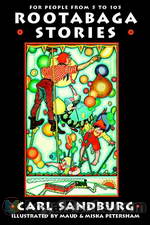 Rootabaga Stories
Rootabaga Stories
Carl Sandburg is beloved by generations of children for his Rootabaga Stories and Rootabaga Pigeons (which is not in the public domain), a series of whimsical, sometimes melancholy stories he originally created for his own daughters. The Rootabaga Stories were born of Sandburg’s desire for “American fairy tales” to match American childhood. He felt that the European stories involving royalty and knights were inappropriate, and so populated his stories with animals, skyscrapers, trains, corn fairies, and other colorful characters. | |
By: Carleton Britton Case | |
|---|---|
 Stories from the Trenches: Funny Tales the Soldiers Tell
Stories from the Trenches: Funny Tales the Soldiers Tell
Carleton B. Case is well known for wit and humor, as the title of the book leads one to believe this book will follow suit. - Summary by April6090 | |
By: Caroline Lockhart (1871-1962) | |
|---|---|
 Dude Wrangler
Dude Wrangler
Spoiled, handsome, 24 year old Easterner meets pretty, no-nonsense gal from Wyoming, is instantly smitten and does a sea-change to try and impress her in this genial romantic comedy. | |
By: Caroline Ticknor (1866-1937) | |
|---|---|
 Hypocritical Romance, and Other Stories
Hypocritical Romance, and Other Stories
This is a collection of twelve original and entertaining little romances. Literature is an important anchor that helps us understand society in the American Gilded Age in the late ninteenth century, and these stories allow us to understand the marriage market of the time. - Summary by Carolin"Miss Ticknor, well known as one of the most promising of the younger school of American writers, has never done better work than in the majority of these clever stories, written in a delightful comedy vein." - The Publisher | |
By: Carolyn Wells (1862-1942) | |
|---|---|
 The Jingle Book
The Jingle Book
A collection of silly poetry and limericks for children. | |
By: Carroll Watson Rankin (1864-1945) | |
|---|---|
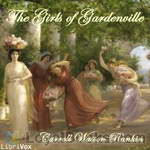 The Girls of Gardenville
The Girls of Gardenville
It is pleasant to have another book about a group of merry, natural girls, who have the attractions of innocence and youthful faults. "The Sweet Sixteen" Club made fudge, and went on picnics, and behaved just as jolly, nice maidens should. (The Outlook, vol. 82, Mar. 24, 1906) | |
By: Charles Dickens (1812-1870) | |
|---|---|
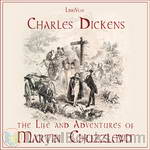 The Life and Adventures of Martin Chuzzlewit
The Life and Adventures of Martin Chuzzlewit
Dickens thought it was “in a hundred points, immeasurably the best” of his stories. Yet it was also one of his greatest flops. Compared to his other novels, The Life and Adventures of Martin Chuzzlewit was a dismal failure in terms of sales and the main reason for Dickens falling out with his long term publisher Chapman & Hall. They invoked a penalty clause and demanded that he pay back a portion of the advance which he refused. Martin Chuzzlewit was also dimly received in Dickens friendly America... | |
By: Charles S. Brooks (1878-1934) | |
|---|---|
 At The Sign of The Greedy Pig
At The Sign of The Greedy Pig
"Sometimes, in a mood of Spanish castles, there flits across my fancy the vision of an ancient city on a hill-top, with lofty battlements thrust upward from the rock and towers that stand on tip-toe…. Our stage is the square of this ancient city, seen dimly in the night.... The time of our play is remote and I choose to think the world is flat, that comets are of evil prophecy and witches still ride on the windy moon...." Published in the same book as "Wappin' Wharf: A Frightful Comedy of Pirates", this story is subtitled "A Frightful Comedy of Beggars"... | |
By: Charlotte Perkins Gilman (1860-1935) | |
|---|---|
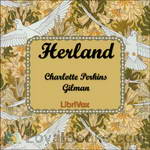 Herland
Herland
Herland is a utopian novel from 1915, written by feminist Charlotte Perkins Gilman. The book describes an isolated society comprised entirely of Aryan women who reproduce via parthenogenesis (asexual reproduction). The result is an ideal social order, free of war, conflict and domination. It first appeared as a serial in Perkin’s monthly magazine Forerunner. | |
By: Chester K. Steele (1862-1930) | |
|---|---|
 The Diamond Cross Mystery
The Diamond Cross Mystery
Colonel Ashley is confronted with a difficult case: The proprietor of a jewelry shop is found murdered, and a valuable diamond cross is stolen. Whodunnit, and how can the Colonel's expertise in fishing help to solve the case? | |
By: Christopher Morley (1890-1957) | |
|---|---|
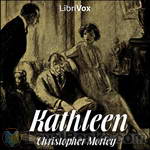 Kathleen
Kathleen
A group called the Scorpions, eight Oxford undergraduates, find a letter Kathleen wrote a letter to Joe at Oxford. They build up an image of Kathleen and Joe from the letter and set out to find and meet Kathleen. The competition between them leads to many entertainingly funny scenarios. | |
 Mince Pie
Mince Pie
Mince Pie is a compilation of humorous sketches, poetry, and essays written by Christopher Morley. Morley sets the tone in the preface: "If one asks what excuse there can be for prolonging the existence of these trifles, my answer is that there is no excuse. But a copy on the bedside shelf may possibly pave the way to easy slumber. Only a mind "debauched by learning" (in Doctor Johnson's phrase) will scrutinize them too anxiously." | |
 In the Sweet Dry and Dry
In the Sweet Dry and Dry
Written just before Prohibition to entail the possible troubles that might happen en route. Both sides of the argument, or battle as the case may be, strike out with various over-top methods like legislating most fruits and vegetables as unsafe or intoxicating large groups with breathable alcohol. | |
By: Clarence Day, Jr. (1874-1935) | |
|---|---|
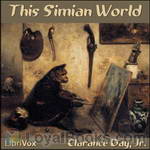 This Simian World
This Simian World
Clarence Day, Jr., best known for his work Life with Father, presents a satirical speculation on how the world might be different if we apes had not risen to prominence, but rather one of the other species had become dominant in our place. | |
By: Daisy Ashford (1881-1972) | |
|---|---|
 The Young Visiters, or Mr. Salteena's Plan
The Young Visiters, or Mr. Salteena's Plan
The Young Visiters is a comic romance novella that parodies upper class society of late Victorian England. Social climber Alfred Salteena introduces his young lady friend Ethel to a genuine gentleman named Bernard and, to his irritation, they hit it off. But Bernard helps Alfred in his plan to become a gentleman, which, Alfred hopes, will help him win back Ethel. | |
By: Donald Ogden Stewart | |
|---|---|
 Perfect Behavior
Perfect Behavior
A humorous guide to manners and etiquette for ladies and gentlemen in a social "crises," published in 1922. (Introduction by Samanem) | |
By: Dorothy Canfield Fisher (1879-1958) | |
|---|---|
 The Bent Twig
The Bent Twig
Semi-autobiographical series of incidents in the life of an intellectual American family in the late 19th - early 20th Century as seen by favored daughter, Sylvia Marshall. Her father is an economics professor in a Midwestern state university and she is following in his inquisitive footsteps. Canfield writes this in a matter-of-fact manner with Tarkingtonesque good humor. | |
By: Dorothy Parker (1893-1967) | |
|---|---|
 Men I'm Not Married To (Version 2)
Men I'm Not Married To (Version 2)
Dorothy Parker was a poet, writer and satirist of the foibles of the early 20th century , and a founding member of New York’s Algonquin Round Table, a group of prominent artistic and social critics, actors and wits. This is a short collection of humorously critical descriptions of various men on the periphery of her “inner circle,” which explain why they are men she is not married to. - Summary by Kirsten Wever | |
By: Dorothy Quigley | |
|---|---|
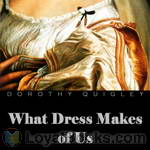 What Dress Makes of Us
What Dress Makes of Us
A wickedly funny book of advice on women’s dress. However old, fat or plain you are, Dorothy Quigley will tell you what not to wear. | |
By: E. Phillips Oppenheim (1866-1946) | |
|---|---|
 Curious Quest
Curious Quest
A sweet, simple tale of how friendship and honesty triumph over money. The protagonist’s pun of a name—Ernest Bliss—foreshadows the plot in which this bored young millionaire transforms his indolent self and finds love. Typical of its era , this book contains a few antisemitic stereotypes. The story was made famous by the 1936 film The Amazing Quest of Ernest Bliss with Cary Grant and Mary Brian. E. Phillips Oppenheim , was born in London and wrote more than one hundred novels as well as many short stories and film adaptations, some under the name of Anthony Partridge. His 1941 autobiography, The Pool of Memory, is well worth reading. | |
By: Eden Phillpotts (1862-1960) | |
|---|---|
 Human Boy Again
Human Boy Again
Published in 1908, this is a further collection of twelve humorous short stories about English school boys. The author wrote two other books in this series: The Human Boy and The Human Boy And The War . Eden Phillpotts was popular with the reading public and wrote prolifically novels, short stories, poetry, plays, and nonfiction. - Summary by David Wales | |
 Deal With The Devil
Deal With The Devil
A Deal with the Devil is a classic tale with a humorous twist. We find that on the night preceeding his 100th birthday Grandpapa, a cantankerous yet loveable sort, has made a deal with the devil, which his granddaughter, in part, will pay. - Summary by Angelique G. Campbell | |
By: Edgar Allan Poe | |
|---|---|
 Two Poe Tales
Two Poe Tales
Edgar Allan Poe is best known for his famous short horror stories; however, horror is not the only genre in which he wrote. How To Write a Blackwood Article and its companion piece A Predicament are satirical works exploring the pieces of the formula generally seen in short horror stories (”articles”) found in the Scottish periodical “Blackwood’s Magazine” and the successful misapplication of said formula by – horrors! – a woman author! – respectively. | |
By: Edgar Saltus (1855-1921) | |
|---|---|
 Mr. Incoul's Misadventure
Mr. Incoul's Misadventure
Saltus has been compared to Oscar Wilde for wit and language. His novels are entertaining, yet philosophical, exposing the vagaries of human nature. The publishers promoted Mr. Incoul's Misadventure thus: "A novel which is sure to be condemned by every one who prefers platitude to paradox, or tea and toast to truffles and red pepper." | |
By: Edith Nesbit (1858-1924) | |
|---|---|
 Lark
Lark
"The Lark" has all the charm and freshness which have made Miss Nesbit's former novels so justly popular, and yet the story ts entirely new and original. Two girls, Jane and Lucilla, are led by Jane's guardian to entertain high hopes. The fortune, however, which Jane was to have inherited, has been lost by unlucky speculations, and the two girls have to set about earning their own livings. They experience many adventures and ups and downs of fortune before they meet with the two men who ensure their happiness and prosperity. A delightful story, well worth reading. | |
By: Edith Wharton (1862-1937) | |
|---|---|
 Old New York
Old New York
Old New York is a collection of four novellas by Edith Wharton, revolving around upper-class New York City society in the 1840s, 1850s, 1860s, and 1870s. - Summary from Wikipedia | |
By: Edmond About (1828-1885) | |
|---|---|
 Notary's Nose
Notary's Nose
Ironic and Satirical: A successful Parisian notary, Alfred L’Ambert, is smitten with a fourteen-year-old ballet dancer. After a quarrel, his Turkish rival challenges him to a duel during which the notary gets his nose cut off. Thereupon, a surgeon is called for a grafting. The donor is a simple man from the Auvergne with whom the notary is forced to spend thirty days, his nose being literally glued to the arm of the man. But even after this term, his bad fortune doesn’t come to an end... - Summary by Didier Le Nez d’un notaire - The Notary's Nose in French La Nariz de un notario - The Notary's Nose in Spanish | |
By: Edmund Spenser (1552?-1599) | |
|---|---|
 Amoretti: A sonnet sequence
Amoretti: A sonnet sequence
The Amoretti (meaning little love poems) is a sequence of 89 sonnets written in the tradition of the Petrarchan sonnets, a popular form for poets of the Renaissance period. Spenser’s sequence has been largely neglected in modern times, while those of his contemporaries William Shakespeare and Sir Philip Sidney have been acclaimed. However, because of the artistic skill, along with the emotion and the humor exhibited, these poems deserve a broader hearing, even though they may be somewhat difficult for the present-day reader, partly through Spenser’s love for words and expressions that were already archaic in his time... | |
 Brittains Ida or Venus and Anchises
Brittains Ida or Venus and Anchises
While hunting, the boy Anchises stumbles upon Venus's forest retreat and is so kindly entertained by the goddess that he becomes the proud father of Aeneas, the hero of Vergil's Aeneid. The poem is an epyllion like Marlowe's "Hero and Leander" and Shakespeare's "Venus and Adonis," a short erotic poem with a mythological subject. The style is Spenserian, the stanzas rhyming ababbccc. When Brittain's Ida was published in 1628, the publisher ascribed it to Edmund Spenser. However, in 1926 Ethel Seaton discovered and published Fletcher's original manuscript, whose opening stanzas make clear that this is the work of Fletcher, who entitled it "Venus and Anchises." | |
By: Edna Ferber (1885-1968) | |
|---|---|
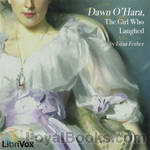 Dawn O'Hara, The Girl Who Laughed
Dawn O'Hara, The Girl Who Laughed
Dawn O’Hara, the Girl Who Laughed was Edna Ferber’s first novel. Dawn, a newspaperwoman working in New York, finds herself back home in Michigan on doctor’s orders. Years of living in boarding-houses and working to pay for the care of her brilliant but mentally ill husband, Peter Orme, have taken their toll. At twenty-eight, Dawn feels like an old woman with no future. But, the loving care of her sister Norah and her family along with the attentions of the handsome German doctor, Ernst Von Gerhard, slowly bring Dawn back to life... | |
 Buttered Side Down
Buttered Side Down
"And so," the story writers used to say, "they lived happily ever after." Um-m-m—maybe. After the glamour had worn off, and the glass slippers were worn out, did the Prince never find Cinderella's manner redolent of the kitchen hearth; and was it never necessary that he remind her to be more careful of her finger-nails and grammar? After Puss in Boots had won wealth and a wife for his young master did not that gentleman often fume with chagrin because the neighbors, perhaps, refused to call on the lady of the former poor miller's son? It is a great risk to take with one's book-children... | |
By: Edward Eggleston (1837-1902) | |
|---|---|
 Hoosier Schoolmaster
Hoosier Schoolmaster
"Want to be a school-master, do you? You? Well, what would you do in Flat Crick deestrick, I'd like to know? Why, the boys have driv off the last two, and licked the one afore them like blazes. You might teach a summer school, when nothin' but children come. But I 'low it takes a right smart man to be school-master in Flat Crick in the winter. They'd pitch you out of doors, sonny, neck and heels, afore Christmas." | |
By: Edward Lear (1812-1888) | |
|---|---|
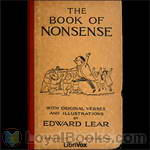 A Book of Nonsense
A Book of Nonsense
In 1846 Lear published A Book of Nonsense, a volume of limericks that went through three editions and helped popularize the form. This book contains 112 of these funny, imaginative verses that have been well loved by many generations of children (and adults). ( | |
 Nonsense Songs, Stories, Botany and Alphabets
Nonsense Songs, Stories, Botany and Alphabets
A selection of nonsense poems, songs (not sung!), stories, and miscellaneous strangeness. The work includes the "Owl and the Pussycat" and a recipe for Amblongus Pie, which begins "Take 4 pounds (say 4½ pounds) of fresh ablongusses and put them in a small pipkin."Edward Lear was an English writer, poet, cat-lover, and illustrator (his watercolours are beautiful). This recording celebrates the 200th anniversary of Lear's birth. | |
By: Edward M. Forster (1879-1970) | |
|---|---|
 Where Angels Fear to Tread
Where Angels Fear to Tread
On a journey to Tuscany with her young friend and traveling companion Caroline Abbott, widowed Lilia Herriton falls in love with both Italy and a handsome Italian much younger than herself, and decides to stay. Furious, her dead husband’s family send Lilia’s brother-in-law to Italy to prevent a misalliance, but he arrives too late. Lilia marries the Italian and in due course becomes pregnant again. When she dies giving birth to her child, the Herritons consider it both their right and their duty to travel to Monteriano to obtain custody of the infant so that he can be raised as an Englishman. | |
By: Edward Ormondroyd | |
|---|---|
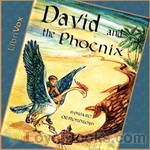 David and the Phoenix
David and the Phoenix
David knew that one should be prepared for anything when one climbs a mountain, but he never dreamed what he would find that June morning on the mountain ledge. There stood an enormous bird, with a head like an eagle, a neck like a swan, and a scarlet crest. The most astonishing thing was that the bird had an open book on the ground and was reading from it! This was David’s first sight of the fabulous Phoenix and the beginning of a pleasant and profitable partnership. The Phoenix found a great... | |
By: Edward Phillips Oppenheim (1866-1946) | |
|---|---|
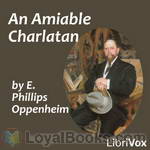 An Amiable Charlatan
An Amiable Charlatan
An Englishman is enjoying his dinner at Stephano's, at which he is a regular diner. A man enters quickly, sits at his table, starts eating his food, and hands him a packet underneath the table! So begins Paul Walmsley's acquaintance - and adventures - with American adventurer Joseph H. Parker and his lovely daughter, Eve. (Intro by TriciaG)Note that there is an alternate reading of section 8. Both are excellent renditions, so enjoy either or both of them. | |
By: Edward S. Van Zile (1863-1931) | |
|---|---|
 Perkins, the Fakeer: A Travesty on Reincarnation
Perkins, the Fakeer: A Travesty on Reincarnation
As the title suggests we are treated to three humourous and curious psychical transpositions in the cases of "When Reginald was Caroline," "How Chopin came to Remsen," and "Clarissa's troublesome baby" . If you're looking for a break from more serious fare you can count on this one to amuse and entertain you. Summary by Celine Major. | |
By: Edward Streeter (1891-1976) | |
|---|---|
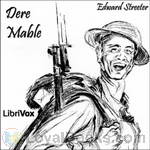 Dere Mable
Dere Mable
Bill is in training camp, preparing to go off to World War I. This book is a collection of love letters written to his sweetheart, Mable. The letters are humorous, mis-spelled, and have many stories of life in an army camp – all from Bill’s unique perspective. | |
By: Edwin Abbott Abbott (1838-1926) | |
|---|---|
 Flatland: A Romance of Many Dimensions
Flatland: A Romance of Many Dimensions
If you've never heard the term “Mathematical Fiction” before, Edwin Abbott Abbott's 1884 novella, Flatland can certainly enlighten you! Flatland: A Romance of Many Dimensions was published in 1884 and since then, it has been discovered and re-discovered by succeeding generations who have been delighted by its unique view of society and people. The plot opens with a description of the fictional Flatland. The narrator calls himself “Square” and asks readers to “Imagine a vast sheet of paper on which straight Lines, Squares, Triangles, Pentagons, Hexagons and other figures, instead of remaining fixed in their places, move freely about... | |
By: Edwin F. Benson (1867-1940) | |
|---|---|
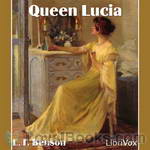 Queen Lucia
Queen Lucia
E. F. Benson (1867-1940) was born at Wellington College in Berkshire, where his father, who later went on to become the Archbishop of Canterbury, was the first Headmaster. He wrote 105 books in all. Queen Lucia (first published in 1920) was the first of Benson’s ‘Mapp and Lucia’ novels of which there were six. This first book is a comedy of manners based in the provincial village of Riseholme, where Emmeline Lucas (the Queen Lucia of the title) presides over the social and artistic universe of the gullible residents... | |
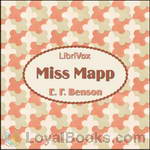 Miss Mapp
Miss Mapp
E. F. Benson’s Mapp and Lucia series, consists of six novels and three short stories. The novels are: Queen Lucia, Lucia in London, Miss Mapp (including the short story The Male Impersonator), Mapp and Lucia, Lucia’s Progress (published as The Worshipful Lucia in the U.S.) and Trouble for Lucia. Most of these works are set in the fictional village of “Tilling”, which is based on the village of Rye, Sussex, England. “Mallards”, the house with the garden room inhabited by Miss Mapp, and later by Lucia, is based on Lamb House, Benson’s own home in Rye. Earlier, the house was the Sussex home of writer Henry James. | |